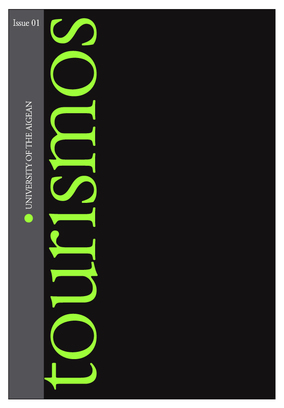Tourism planning and policy in selected mountainous areas of Greece
Part of : Tourismos : an international multidiciplinary journal of tourism ; Vol.7, No.2, 2012, pages 481-494
Issue:
Pages:
481-494
Section Title:
Case studies
Abstract:
Mountains occupy approximately one/fifth of the total surface of the earth and have been progressively transformed into important tourist destinations. Many developed countries have traced and implemented remarkable state interventions to promote tourism development in their mountain areas. State planning, fundamentally, intervenes in a compensating and balancing way, creating the necessary terms and conditions for the smooth formation of the necessary tourist capital at national, regional and local level. This paper evaluates the effectiveness of the state tourism policy in selected mountain prefectures of Greece (Ioannina, Evritania and Kastoria), according to the mountain zone typology used by UNEP-WCMC. The evaluation of the three entirely mountain prefectures according to selected aspects of the tourism policy implemented and the hotel evolutionary geographical distribution highlights a policy gap as regards tourism development in the Greek mountain areas; such tourism development has been progressively incorporated in the general regionalisation policy adopted of Greek tourism.
Subject:
Subject (LC):
Keywords:
mountainous, incentives policy, hotel investments
Notes:
Περιέχει πίνακες και βιβλιογραφία
References (1):
- Chheang, V. (2009). The state and tourism planning: A case study of Cambodia, Tourismos, Vol. 4, No.1, pp.63-82.Christaller, W. (1964). Some considerations of tourism location in Europe: the peripheral regions - underdeveloped countries-recreation areas. Regional Science Association Papers, Vol. 72, pp.95-103.Copus, A.K. & Price, M.F. (2002). A Preliminary Characterisation of the Mountain Areas of Europe. Brussels: Euromontana.Dodds, R. & Butler, R. (2010). Barriers to implementing sustainable Tourism policy in mass tourism destinations. Tourismos, Vol. 5, No.1, pp.35-53Filippou, P., Theoharopoulos, D. & Mathopoulos, D. (2009). Spatial planning in mountainous areas. Paper presented at the 2nd PanHellenic Conference of Urban and Regional Planning and Development. University of Thessaly, Volos, Greece: 24-27 September.Friedmann, J. (1966). Regional Development Policy: a Case Study of Venezuela. Cambridge, MIT Press.Henderson, J.C. (2008). The politics of tourism: A perspective from the Maldives. Tourismos, Vol. 3, No.1, pp. 99-115.Jansky, L., Ives, J., Furuyashiki, K. & Watanabe, T. (2002). Global mountain research for sustainable development. Global Environmental Change, Vol. 12, No.3, pp.231-239.Romita, T. (2007). Sustainable tourism: The environmental impact of “undetected” tourism. Tourismos, Vol. 2, No.1, pp.47-62.Vlami, A. (2008). The financing and geographical development of Greek tourism: The case of Greek hotel sector, 1950 – 2005. Unpublished PhD Thesis. Patra, Greece: University of Patras.United Nations (1992). Earth summit: Agenda 21, chapter 13 – managing fragile ecosystems: sustainable mountain development. Final text as adopted by the Plenary in Rio de Janeiro. Brazil: 14 June.Wanhill, S. (1999). The Economic aspects of location marketing. In T. Baum and R. Mudambi (Eds.) Economics and Management Methods for Tourism and Hospitality Research, London: John Wiley & Sons.Vassiliadis, C.A., Siomkos G.J., Vassilikopoulou, A. & Mylonakis, J. (2006). Product design decisions for developing new tourist destinations: The case of Rhodopi mountain. Tourismos, Vol. 1, No.1, pp.91-108.




